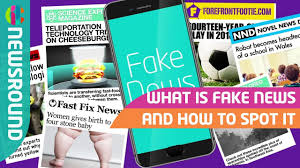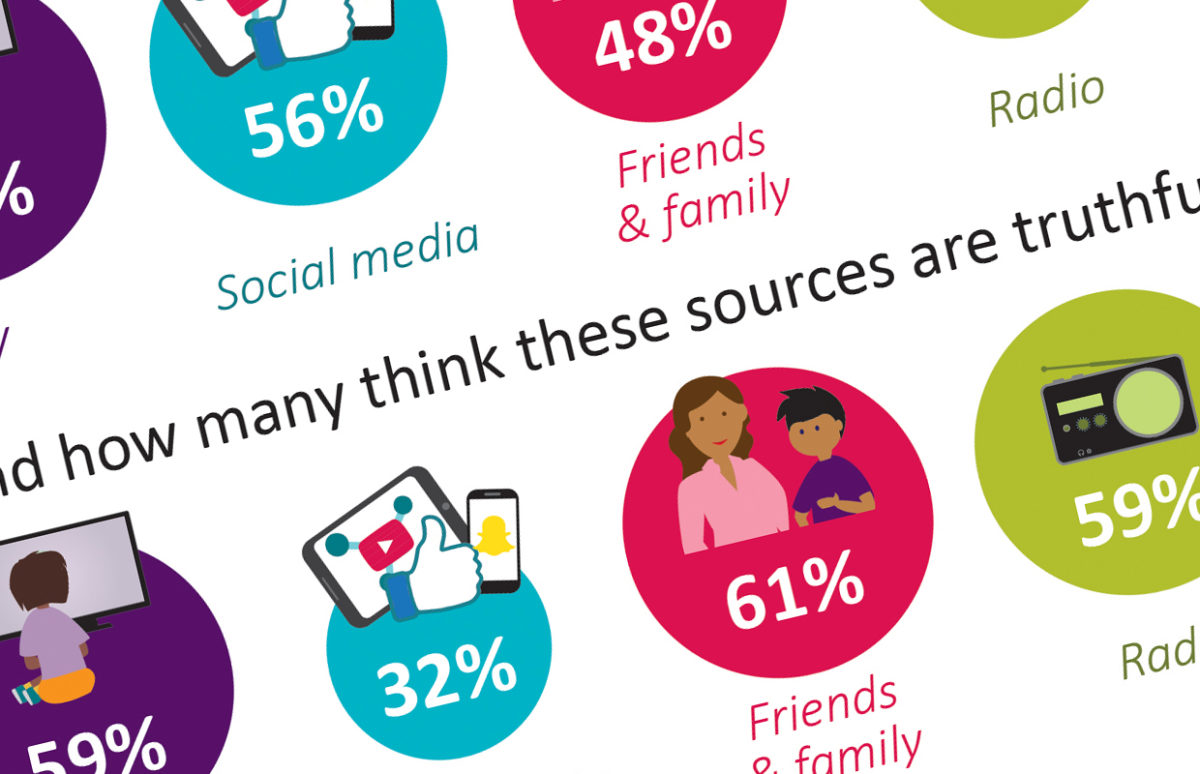Governments and news organisations around the world are more and more concerned about teaching children to navigate the nebulous world of news and information on the Internet and help them become well-informed citizens. That means there are plenty of resources out there to help teach the topic. Here’s a selection.
Today’s teenagers are often referred to as “digital natives”, born with and comfortable with the internet and online life. But in this area as in others, they are not always as clued in as adults imagine (or as they imagine themselves). The 2017 “Children and Parents: Media Use and Attitudes Report” in the U.K. found that 73% 12-15-year-olds were aware of the issue of fake news but only 39% felt they had seen something online they thought was fake. And only 43% recognised sponsored links on search engines as advertising, although the word “Ad” appears in a box next to the links shown to those questioned.
The BBC has recently launched a project called “Real News” to help schools teach media literacy and there are some excellent resources available on their site, both videos and downloadable worksheets.
There’s a lesson on “What Is News?” which fits well with the semaine de la presse, our Ready to Use resource and student journalism competition. There are also lessons on "Real vs Fake News" and "Social Media, Images and Data", which comes with a great little animated video on “Numbers and the Tricks They Play”. It encourages pupils to question numbers and statistics in news reports by thinking why they are chosen, and in which context. For example, £1 million spending on a project sounds impressive in a headline, until you discover it is for 1 million people. It's easy enough from A2.
 This video connects with the example we give in our Ready to Use resource: primary-school pupils are asked to say whether articles are true or fake. (They’re all actually fake). It’s worth having your pupils work on the headlines in the resource first, before showing the video. They may well find they don’t do much better than the pupils in the test.
This video connects with the example we give in our Ready to Use resource: primary-school pupils are asked to say whether articles are true or fake. (They’re all actually fake). It’s worth having your pupils work on the headlines in the resource first, before showing the video. They may well find they don’t do much better than the pupils in the test.
Compulsory Voting
International Fact-Checking Day is run by the International Fact-Checking Network. It’s on April 2 every year, the day after April Fool’s Day.
Their Lesson Plan for 2018 isn’t online yet but the one for 2017 has a great exercise to do with lycée classes, and which has a good Anglophone cultural context too. It provides three short articles about countries where voting is either compulsory (like Australia) or voluntary. It’s a good example of how an angle can colour a reader’s opinion. One article is neutral and factual. One uses statistics in an illogical way to make a comment, claiming that the quality of life is better in countries with a voluntary voting system. The third insists statistics show that Donald Trump would not have been elected if the U.S. had compulsory voting, but doesn’t quote those statistics or their source. Pupils are asked to highlight elements in their group’s article: opinion, fact with no source given or fact with source.
Fact-Checking
You might want to have students fact-check stories using reliable fact-checking sites. These six are the ones used by researchers at MIT for their Twitter false and true news study.
factcheck.org
hoax-slayer.com
snopes.com
truthorfiction.com
urbanlegends.about.com (now part of Thoughtco.com)
politifact.com
Copyright(s) :
Ofcom
> False News Travels Faster and Further
> Word of the Year: Fake News
> Did Britain Just Have A Youth Quake?
Tag(s) : "BBC" "critical thinking" "journalism" "media" "media literacy" "news" "opinion" "statistics" "teaching pack" "video"






